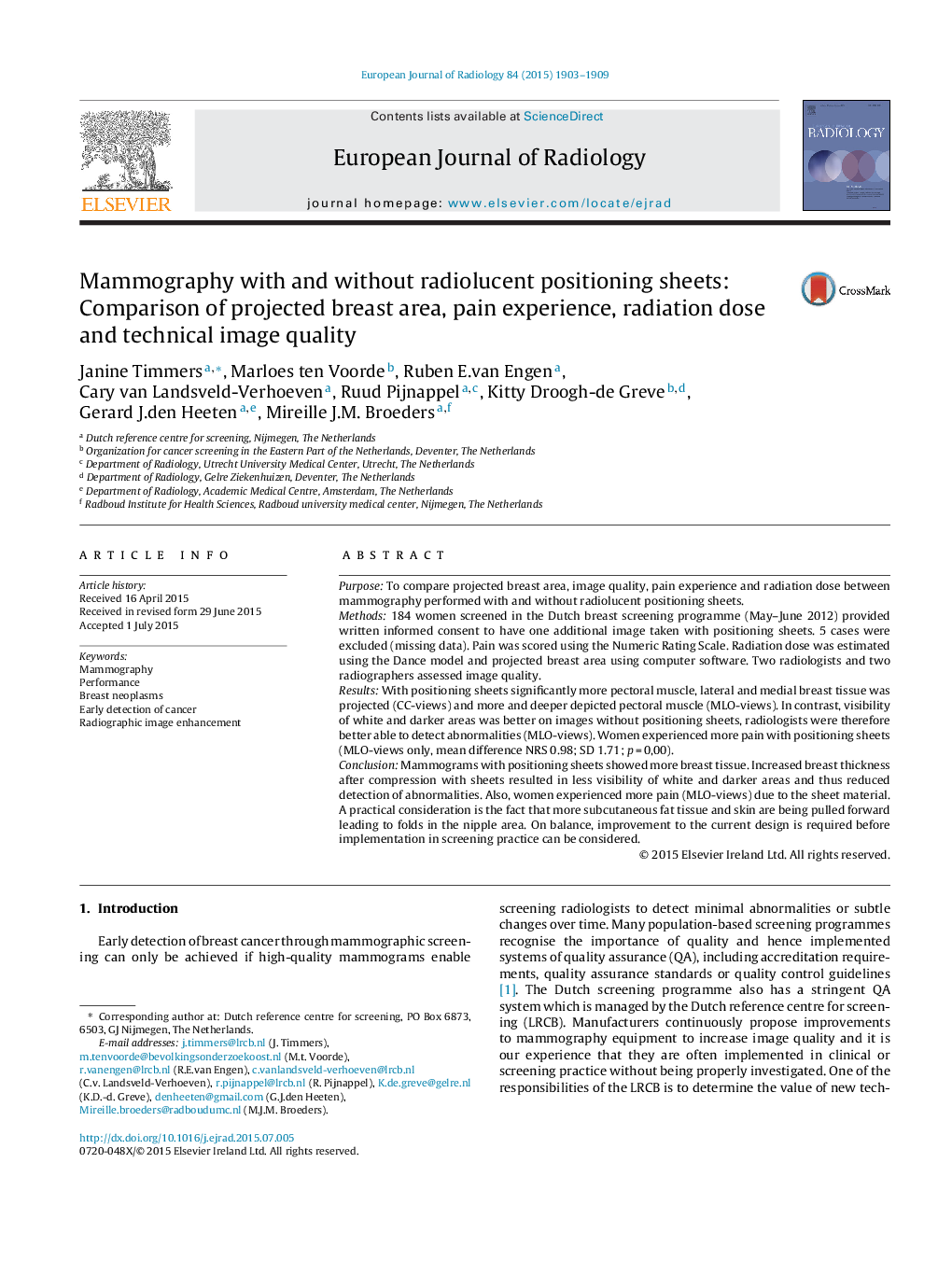| Article ID | Journal | Published Year | Pages | File Type |
|---|---|---|---|---|
| 4225169 | European Journal of Radiology | 2015 | 7 Pages |
•More breast tissue (lateral, medial, pectoral muscle) is depicted with positioning aid.•Increased breast thickness with sheets resulted in less contrast.•This reduced the detectability of abnormalities, like microcalcifications.•Women experienced more pain in MLO views made with positioning aid.•Design improvement by the manufacturer is required before introduction in screening.
PurposeTo compare projected breast area, image quality, pain experience and radiation dose between mammography performed with and without radiolucent positioning sheets.Methods184 women screened in the Dutch breast screening programme (May–June 2012) provided written informed consent to have one additional image taken with positioning sheets. 5 cases were excluded (missing data). Pain was scored using the Numeric Rating Scale. Radiation dose was estimated using the Dance model and projected breast area using computer software. Two radiologists and two radiographers assessed image quality.ResultsWith positioning sheets significantly more pectoral muscle, lateral and medial breast tissue was projected (CC-views) and more and deeper depicted pectoral muscle (MLO-views). In contrast, visibility of white and darker areas was better on images without positioning sheets, radiologists were therefore better able to detect abnormalities (MLO-views). Women experienced more pain with positioning sheets (MLO-views only, mean difference NRS 0.98; SD 1.71; p = 0,00).ConclusionMammograms with positioning sheets showed more breast tissue. Increased breast thickness after compression with sheets resulted in less visibility of white and darker areas and thus reduced detection of abnormalities. Also, women experienced more pain (MLO-views) due to the sheet material. A practical consideration is the fact that more subcutaneous fat tissue and skin are being pulled forward leading to folds in the nipple area. On balance, improvement to the current design is required before implementation in screening practice can be considered.
